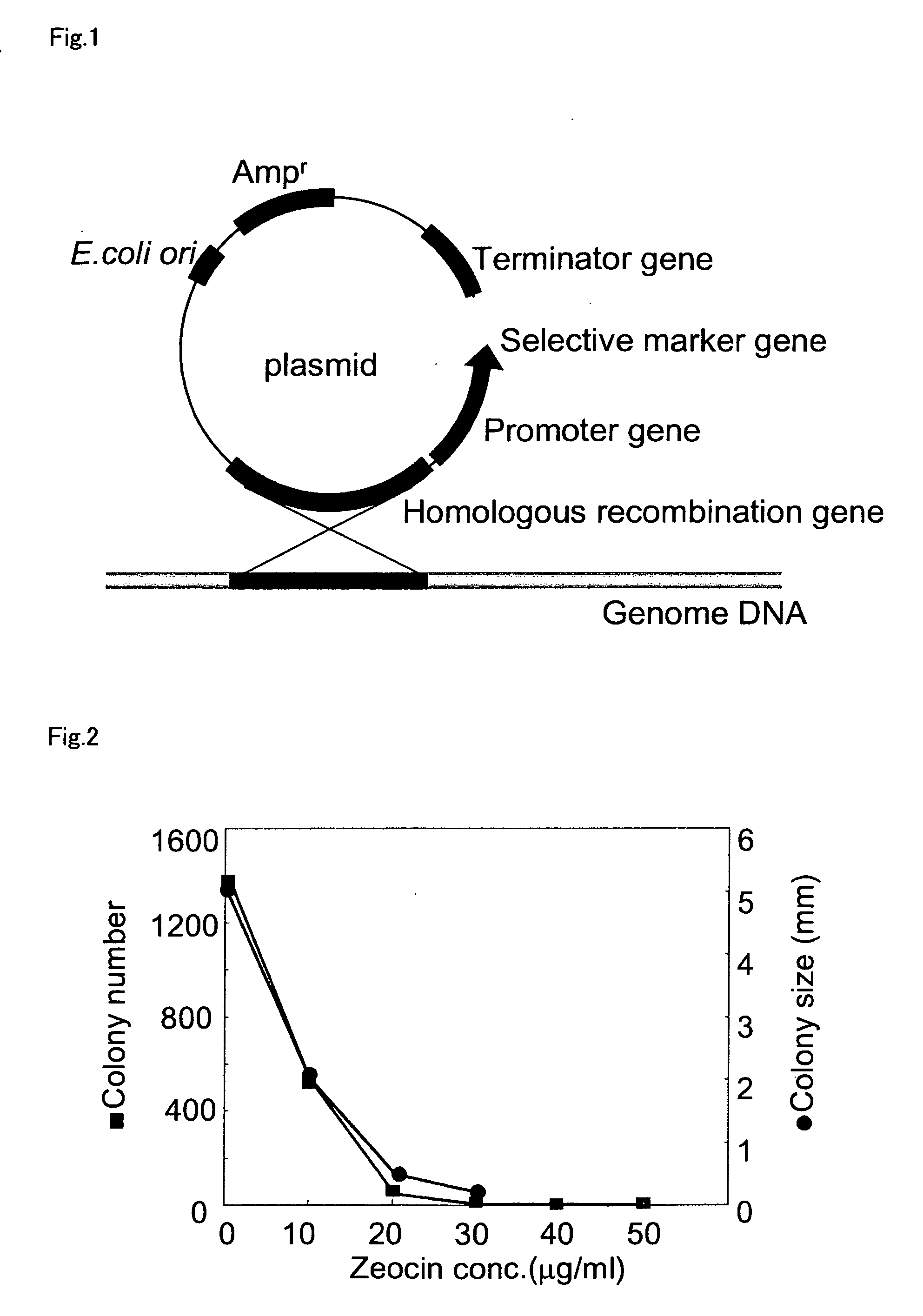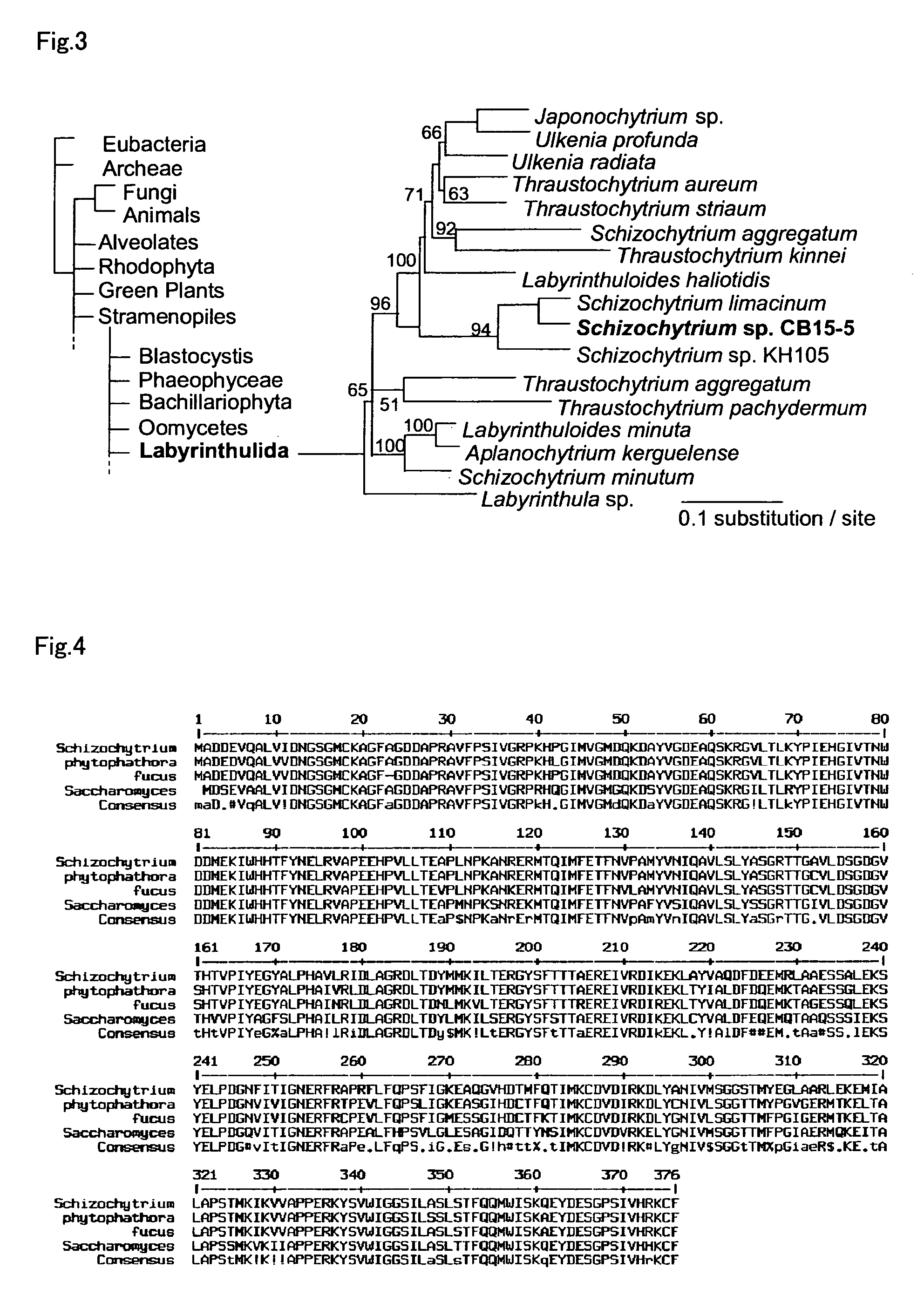Method for introducing a gene into Labyrinthulomycota
a technology of labyrinthulomycota and gene, which is applied in the field of labyrinthulomycota gene introduction, can solve the problems that the transformation system of labyrinthulomycota has not been developed at all, and achieve the effect of improving the ability of labyrinthulomycota
- Summary
- Abstract
- Description
- Claims
- Application Information
AI Technical Summary
Benefits of technology
Problems solved by technology
Method used
Image
Examples
example
[0059] In this Example, Schizochytrium sp. CB15-5 having high proliferation and lipid accumulation properties was used as a model host. Gene transfer by homologous recombination was performed for stably maintaining a transgene. A transfer plasmid having a promoter working with reliability and a selection marker gene was first prepared to investigate a gene transfer method (FIG. 1).
(A) Materials and method
(1) Strain used
[0060] CB 15-5 strain of the genus Schizochytrium
(2) Culture of microorganism cells
GPY medium (pH 7.4)
3.0% D-Glucose
1.5% Polypeptone
0.5% Yeast Extract
50.0% Sea water
GPYS medium (pH 7.4)
3.0% D-Glucose
0.6% Polypeptone
0.2% Yeast Extract
50.0% Sea water
50 mM sucrose
Shaking incubator: Bio-Shaker BR-300 CF (TAITEC)
Temperature: 28° C.
Shaking speed: 170 min-1
Preculture time: 1 day
Main culture time: 1 to 4 days
Culture temperature: 28° C.
(3) Test for Zeocin sensitivity of CB 15-5 strain
[0061] The precultured microorganism cells were di...
PUM
| Property | Measurement | Unit |
|---|---|---|
| Electrical conductance | aaaaa | aaaaa |
| Mass | aaaaa | aaaaa |
| Mass | aaaaa | aaaaa |
Abstract
Description
Claims
Application Information
 Login to View More
Login to View More - R&D
- Intellectual Property
- Life Sciences
- Materials
- Tech Scout
- Unparalleled Data Quality
- Higher Quality Content
- 60% Fewer Hallucinations
Browse by: Latest US Patents, China's latest patents, Technical Efficacy Thesaurus, Application Domain, Technology Topic, Popular Technical Reports.
© 2025 PatSnap. All rights reserved.Legal|Privacy policy|Modern Slavery Act Transparency Statement|Sitemap|About US| Contact US: help@patsnap.com



